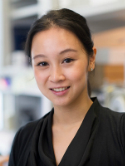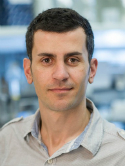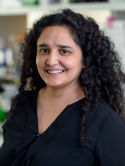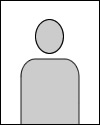MYBL1 rearrangements and MYB amplification in breast adenoid cystic carcinomas lacking the MYB-NFIB fusion gene Journal Article
| Authors: | Kim, J.; Geyer, F. C.; Martelotto, L. G.; Ng, C. K. Y.; Lim, R. S.; Selenica, P.; Li, A.; Pareja, F.; Fusco, N.; Edelweiss, M.; Kumar, R.; Gularte-Merida, R.; Forbes, A. N.; Khurana, E.; Mariani, O.; Badve, S.; Vincent-Salomon, A.; Norton, L.; Reis-Filho, J. S.; Weigelt, B. |
| Article Title: | MYBL1 rearrangements and MYB amplification in breast adenoid cystic carcinomas lacking the MYB-NFIB fusion gene |
| Abstract: | Breast adenoid cystic carcinoma (AdCC), a rare type of triple-negative breast cancer, has been shown to be driven by MYB pathway activation, most often underpinned by the MYB–NFIB fusion gene. Alternative genetic mechanisms, such as MYBL1 rearrangements, have been reported in MYB–NFIB-negative salivary gland AdCCs. Here we report on the molecular characterization by massively parallel sequencing of four breast AdCCs lacking the MYB–NFIB fusion gene. In two cases, we identified MYBL1 rearrangements (MYBL1–ACTN1 and MYBL1–NFIB), which were associated with MYBL1 overexpression. A third AdCC harboured a high-level MYB amplification, which resulted in MYB overexpression at the mRNA and protein levels. RNA-sequencing and whole-genome sequencing revealed no definite alternative driver in the fourth AdCC studied, despite high levels of MYB expression and the activation of pathways similar to those activated in MYB–NFIB-positive AdCCs. In this case, a deletion encompassing the last intron and part of exon 15 of MYB, including the binding site of ERG-1, a transcription factor that may downregulate MYB, and the exon 15 splice site, was detected. In conclusion, we demonstrate that MYBL1 rearrangements and MYB amplification probably constitute alternative genetic drivers of breast AdCCs, functioning through MYBL1 or MYB overexpression. These observations emphasize that breast AdCCs probably constitute a convergent phenotype, whereby activation of MYB and MYBL1 and their downstream targets can be driven by the MYB–NFIB fusion gene, MYBL1 rearrangements, MYB amplification, or other yet to be identified mechanisms. Copyright © 2017 Pathological Society of Great Britain and Ireland. Published by John Wiley & Sons, Ltd. Copyright © 2017 Pathological Society of Great Britain and Ireland. Published by John Wiley & Sons, Ltd. |
| Keywords: | controlled study; human tissue; protein expression; unclassified drug; oncoprotein; exon; cancer patient; gene overexpression; gene amplification; breast; genetic association; transcription factor; gene rearrangement; hybrid protein; messenger rna; breast carcinoma; fusion gene; down regulation; adenoid cystic carcinoma; breast carcinogenesis; protein c myb; potassium channel herg; rna sequence; molecular pathology; triple negative breast cancer; protein myb; human; priority journal; article; whole genome sequencing; myb; mybl1; myb–nfib fusion gene; alpha actinin 1; mybl1 protein; nfib protein; transcription factor vdr; rna splice site |
| Journal Title: | Journal of Pathology |
| Volume: | 244 |
| Issue: | 2 |
| ISSN: | 0022-3417 |
| Publisher: | Wiley Blackwell |
| Date Published: | 2018-02-01 |
| Start Page: | 143 |
| End Page: | 150 |
| Language: | English |
| DOI: | 10.1002/path.5006 |
| PROVIDER: | scopus |
| PUBMED: | 29149504 |
| PMCID: | PMC5839480 |
| DOI/URL: | |
| Notes: | Article -- Export Date: 1 February 2018 -- Source: Scopus |
Altmetric
Citation Impact
BMJ Impact Analytics
MSK Authors
-
 762
762Norton -
 105
105Edelweiss -
 646
646Weigelt -
 642
642Reis-Filho -
 155
155Ng -
 69
69Martelotto -
 59
59Lim -
 30
30Fusco -
 228
228Pareja Zea -
 108
108Correa Geyer -
 17
17Li -
 8
8Kim -
 194
194Selenica -
 23
23Kumar
Related MSK Work




